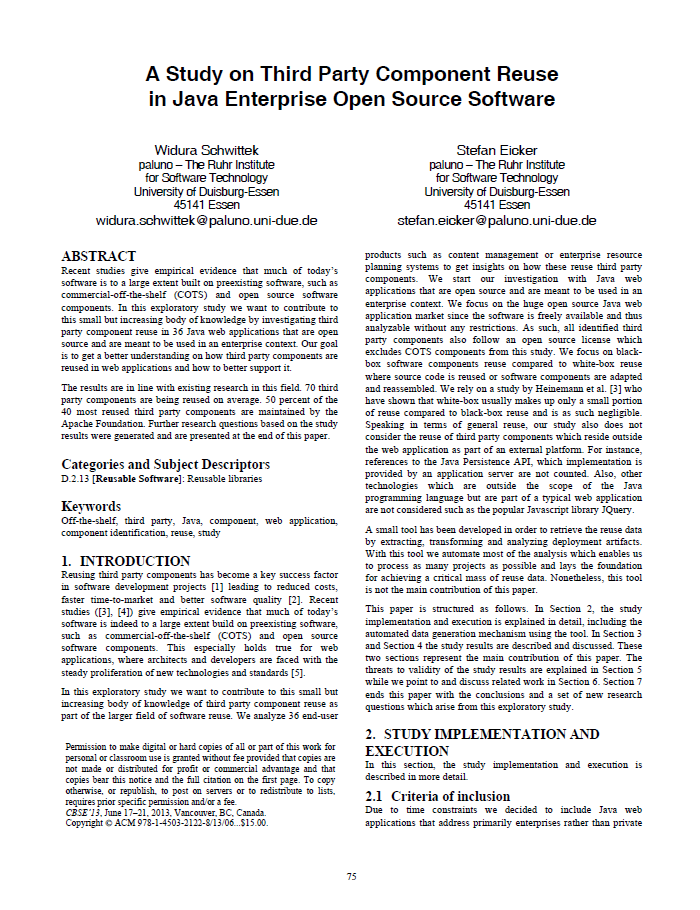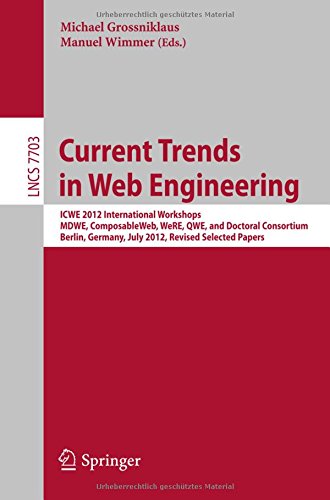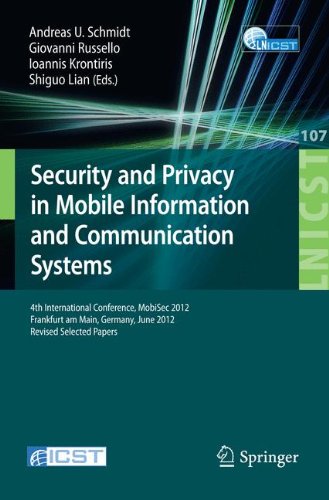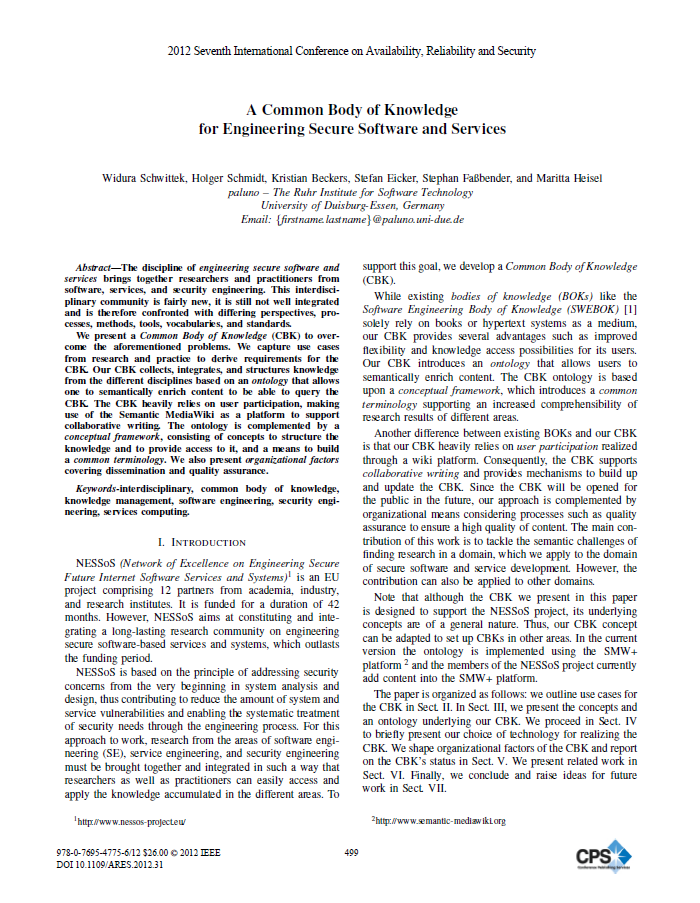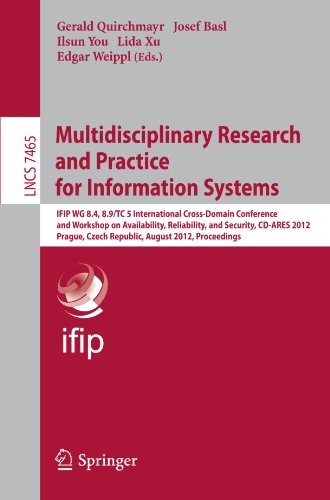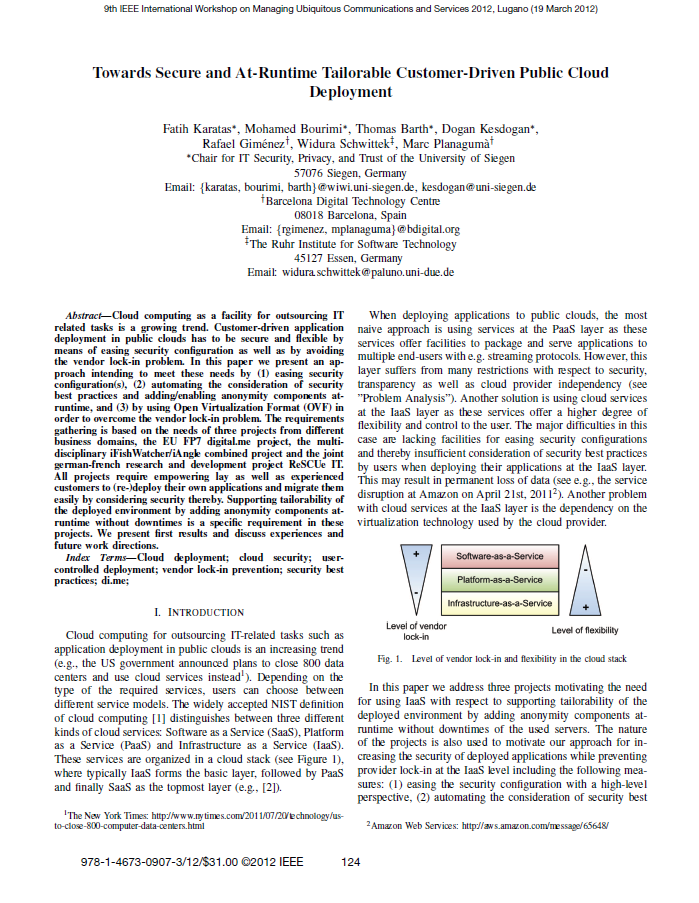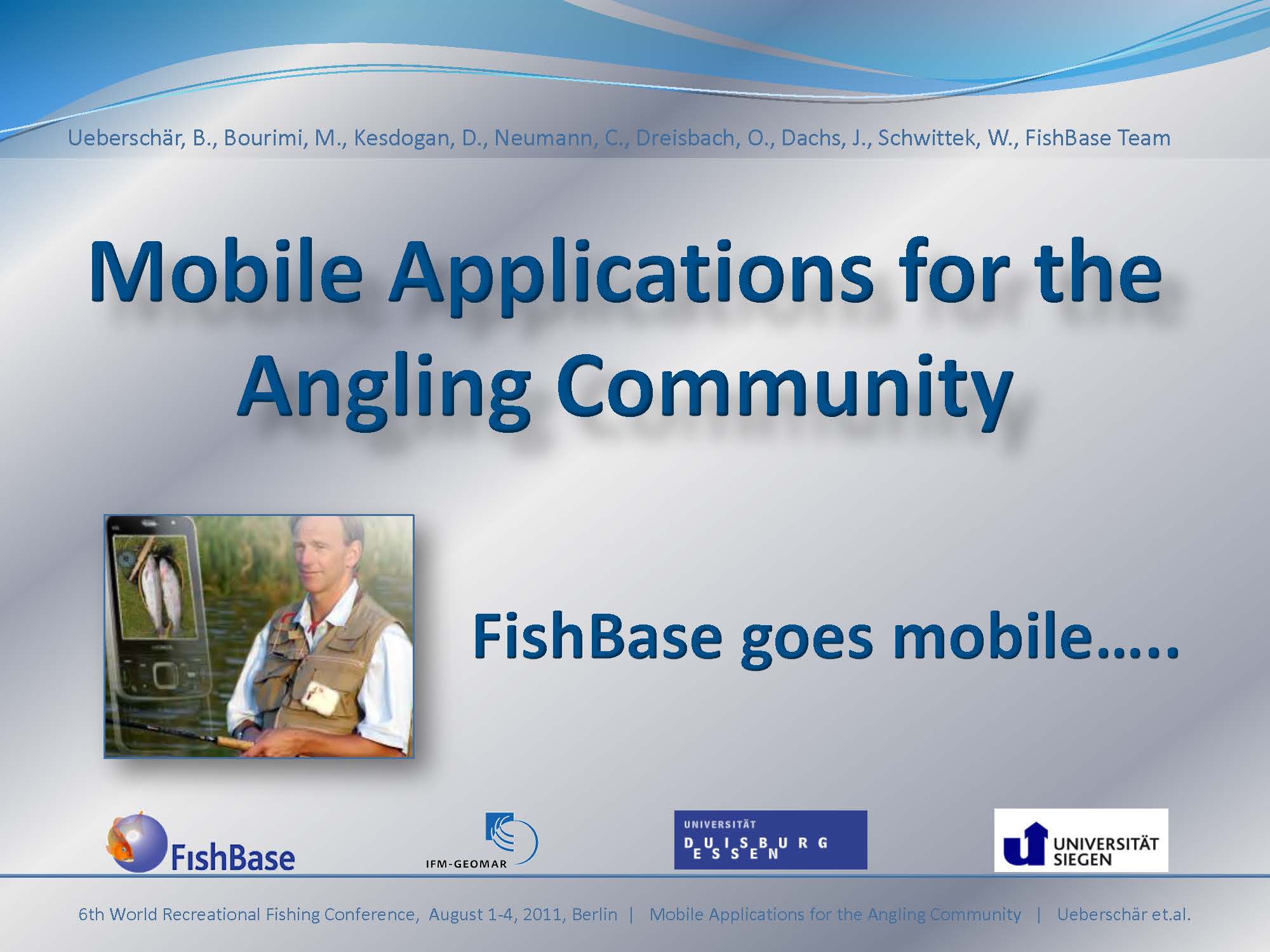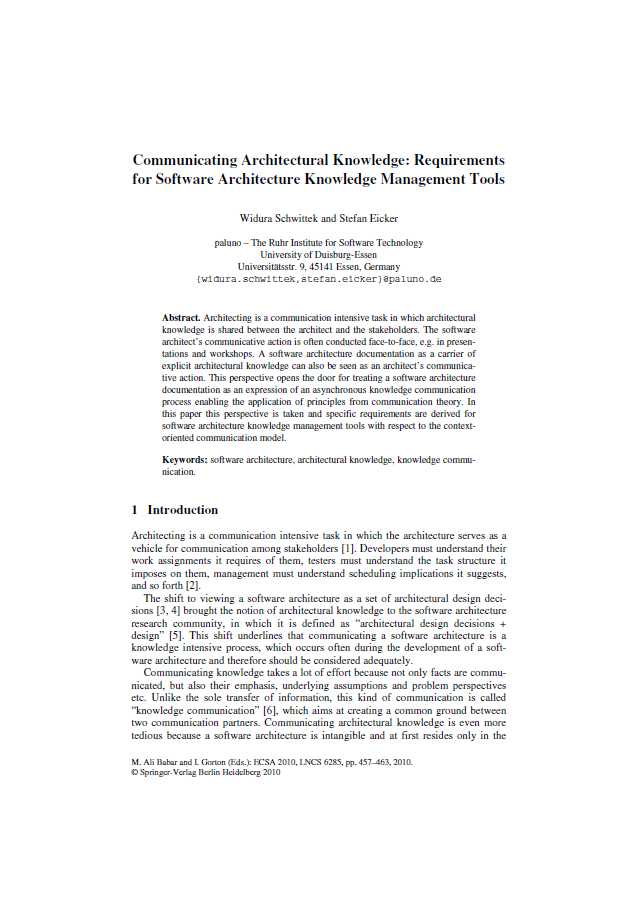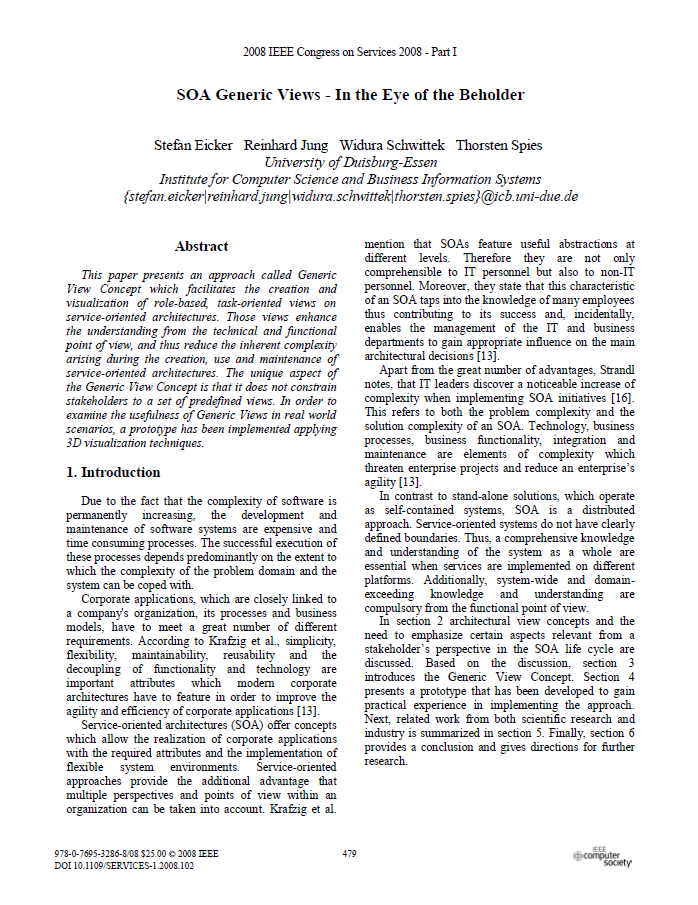ehemalige Mitarbeiter
Lebenslauf:
- Seit April 2010 wissenschaftlicher Mitarbeiter am Lehrstuhl für Wirtschaftsinformatik und Softwaretechnik des Fachbereichs Wirtschaftswissenschaften der Universität Essen (Lehrstuhlinhaber: Prof. Dr. Stefan Eicker)
- Oktober 2009 - Dezember 2009: Auslandsaufenthalt
- Januar 2007 - September 2009: Freier Mitarbeiter u.a. am Lehrstuhl für Wirtschaftsinformatik und Softwaretechnik des Fachbereichs Wirtschaftswissenschaften der Universität Essen (Lehrstuhlinhaber: Prof. Dr. Stefan Eicker)
Forschungsgebiete:
- Forschungsschwerpunkte
- Entscheidungsunterstützung bei der Auswahl von Fremdkomponenten in der Softwareentwicklung
- Softwarearchitekturentscheidungen
- Wissensmanagement im Software Engineering
Projekte:
Publikationen:
- Schwittek, Widura; Eicker, Stefan: A study on third party component reuse in Java enterprise open source software. In: Kruchten, Philippe; Giannakopoulou, Dimitra; Tivoli, Massimo (Hrsg.): CBSE '13 Proceedings of the 16th International ACM Sigsoft symposium on Component-based software engineering. ACM, New York, NY, USA, 2013, S. 75-80. doi:10.1145/2465449.2465468KurzfassungDetailsVolltextBIB Download
Recent studies give empirical evidence that much of today's software is to a large extent built on preexisting software, such as commercial-off-the-shelf (COTS) and open source software components. In this exploratory study we want to contribute to this small but increasing body of knowledge by investigating third party component reuse in 36 Java web applications that are open source and are meant to be used in an enterprise context. Our goal is to get a better understanding on how third party components are reused in web applications and how to better support it.
The results are in line with existing research in this field. 70 third party components are being reused on average. 50 percent of the 40 most reused third party components are maintained by the Apache Foundation. Further research questions based on the study results were generated and are presented at the end of this paper.
- Schwittek, Widura; Eicker, Stefan: Decision Support for Off-The-Shelf Software Components in Web Development. In: Michael Grossniklaus, Manuel Wimmer (Hrsg.): Current Trends in Web Engineering. Springer, Berlin, Heidelberg, 2012, S. 238-243. doi:10.1007/978-3-642-35623-0_26KurzfassungDetailsBIB Download
Reusing off-the-shelf (OTS) components (including commercial and open source software) has become a key success factor in software development projects leading to reduced costs, faster time-to-market and better software quality. This especially holds true in the field of web engineering, where software engineers are faced with a steady proliferation of new technologies and standards. But there are upfront and ongoing efforts and risks attached to the adoption of OTS components which makes decision-making very difficult. Such difficulties are for example a large and intransparent market, incompatibilities between components and architectural mismatches. In this paper, a plan towards a novel platform concept is proposed that can improve the situation for software engineers coping with the adoption of OTS components during webbased systems development.
One key contribution is an empirically derived ontology to describe software artifacts on a feature level allowing a better description and identification of OTS components in the domain of web development. Another key contribution is a concept for a lean experience sharing mechanism. The goal of both contributions is to improve OTS component decision-making.
The concept will be implemented as a platform prepopulated with OTS components from the domain of Java web development. A cross-case study is planned to evaluate the concept.
- Schwittek, Widura; Diermann, André; Eicker, Stefan: A Guidance Model for Architecting Secure Mobile Applications. In: Schmidt, Andreas U.; Russello, Giovanni; Krontiris, Ioannis; Lian, Shiguo (Hrsg.): Security and Privacy in Mobile Information and Communication Systems. Springer, Berlin, Heidelberg, 2012, S. 12-23. doi:10.1007/978-3-642-33392-7KurzfassungDetailsBIB Download
In addition to fast technological advances in the area of mobile devices and its broad adoption in todays developed societies, mobile applications do not only address the consumer electronics market but are also increasingly being used in a business and industry context. Thus, we see a demand for research developing software systems comprising mobile devices with special respect to security concerns. In this paper we want to address this demand from an architectural point of view and make use of the concept of architectural decisions. We present a guidance model that supports on the one hand this decision-making process during architecting mobile applications. On the other hand the presented guidance model serves as a tool to evaluate existing architectures. The guidance model has been created based on an adapted version of Zimmermann’s SOAD framework, which is used for in the context of service-oriented architectures. The guidance model itself consists of a set of interrelated architectural decisions for recurring design situations. The application of the guidance model is demonstrated along a real-world scenario. The guidance model also takes into account that security concerns are changing and therefore provides an extension mechanism which is presented in this paper.
- Schwittek, Widura; Schmidt, Holger; Beckers, Kristian; Eicker, Stefan; Faßbender, Stephan; Heisel, Maritta: A Common Body of Knowledge for Engineering Secure Software and Services. In: Proceedings of the 7th International Conference on Availability, Reliability and Security. IEEE, 2012, S. 499-506. doi:10.1109/ARES.2012.31KurzfassungDetailsVolltextBIB Download
The discipline of engineering secure software and services brings together researchers and practitioners from software, services, and security engineering. This interdisciplinary community is fairly new, it is still not well integrated and is therefore confronted with differing perspectives, processes, methods, tools, vocabularies, and standards. We present a Common Body of Knowledge (CBK) to overcome the aforementioned problems. We capture use cases from research and practice to derive requirements for the CBK. Our CBK collects, integrates, and structures knowledge from the different disciplines based on an ontology that allows one to semantically enrich content to be able to query the CBK. The CBK heavily relies on user participation, making use of the Semantic MediaWiki as a platform to support collaborative writing. The ontology is complemented by a conceptual framework, consisting of concepts to structure the knowledge and to provide access to it, and a means to build a common terminology. We also present organizational factors covering dissemination and quality assurance.
- Beckers, Kristian; Eicker, Stefan; Faßbender, Stephan; Schmidt, Holger; Heisel, Maritta; Schwittek, Widura: Ontology-Based Identification of Research Gaps and Immature Research Areas. In: Quirchmayr, Gerald; Basl, Josef; You, Ilsun; Xu, Lida; Weippl, Edgar (Hrsg.): Multidisciplinary Research and Practice for Information Systems. Springer, Berlin, Heidelberg, 2012, S. 1-16. doi:10.1007/978-3-642-32498-7_1KurzfassungDetailsBIB Download
Researchers often have to understand new knowledge areas, and identify research gaps and immature areas in them. They have to understand and link numerous publications to achieve this goal. This is difficult, because natural language has to be analyzed in the publications, and implicit relations between them have to be discovered. We propose to utilize the structuring possibilities of ontologies to make the relations between publications, knowledge objects (e.g., methods, tools, notations), and knowledge areas explicit. Furthermore, we use Kitchenham’s work on structured literature reviews and apply it to the ontology. We formalize relations between objects in the ontology using Codd’s relational algebra to support different kinds of literature research. These formal expressions are implemented as ontology queries. Thus, we implement an immature research area analysis and research gap identification mechanism. The ontology and its relations are implemented based on the Semantic MediaWiki+ platform.
- Karatas, Fatih; Bourimi, Mohamed; Gimenez, Rafael; Schwittek, Widura; Planaguma, Marc: Towards Secure and At-Runtime Tailorable Customer-Driven Public Cloud Deployment. In: Proceedings of the 9th International IEEE Workshop on Managing Ubiquitous Communications and Services, part of the IEEE International Conference on Pervasive Computing and Communications, (PerCom) 2012. IEEE, 2012, S. 124-130. doi:10.1109/PerComW.2012.6197463KurzfassungDetailsVolltextBIB Download
Cloud computing as a facility for outsourcing IT related tasks is a growing trend. Customer-driven application deployment in public clouds has to be secure and flexible by means of easing security configuration as well as by avoiding the vendor lock-in problem. In this paper we present an approach intending to meet these needs by (1) easing security configuration(s), (2) automating the consideration of security best practices and adding/enabling anonymity components at-runtime, and (3) by using Open Virtualization Format (OVF) in order to overcome the vendor lock-in problem. The requirements gathering is based on the needs of three projects from different business domains, the EU FP7 digital.me project, the multidisciplinary iFishWatcher/iAngle combined project and the joint german-french research and development project ReSCUe IT. All projects require empowering lay as well as experienced customers to (re-)deploy their own applications and migrate them easily by considering security thereby. Supporting tailorability of the deployed environment by adding anonymity components at-runtime without downtimes is a specific requirement in these projects. We present first results and discuss experiences and future work directions.
- Ueberschär, Bernd; Schwittek, Widura; Eicker, Stefan; Bourimi, Mohamed; Heupel, Marcel; Kesdogan, Dogan: Mobile applications for the angling community - Supporting Biodiversity research in FishBase. In: 6th World Recreational Fishing Conference (WRFC), August, 1-4, 2011. Berlin, Humboldt-Univ., 2011. DetailsBIB Download
- Schwittek, Widura; Schmidt, Holger; Eicker, Stefan; Heisel, Maritta: Towards a Common Body of Knowledge for Engineering Secure Software and Services. In: Joaquim Filipe, Kecheng Liu (Hrsg.): Proceedings of the International Conference on Knowledge Management and Information Sharing. SciTePress - Science and Technology Publications, Paris, 2011, S. 369-374. doi:10.5220/0003666303690374KurzfassungDetailsBIB Download
Interdisciplinary communities involve people and knowledge from different disciplines in addressing a common challenge. Differing perspectives, processes, methods, tools, vocabularies, and standards are problems that arise in this context. We present an approach to support bringing together disciplines based on a common body of knowledge (CBK), in which knowledge from different disciplines is collected, integrated, and structured. The novelty of our approach is twofold: first, it introduces a CBK ontology, which allows one to semantically enrich contents in order to be able to query the CBK in a more elaborate way afterwards. Second, it heavily relies on user participation in building up a CBK, making use of the Semantic MediaWiki as a platform to support collaborative writing. The CBK ontology is backed by a conceptual framework, consisting of concepts to structure the knowledge, to provide access options to it, and to build up a common terminology. To ensure a high quality of the provided contents and to sustain the community’s commitment, we further present organizational means as part of our approach. We demonstrate our work using the example of a Network of Excellence EU project, which aims at bringing together researchers and practitioners from services computing, security and software engineering.
- Schwittek, Widura; Eicker, Stefan: Communicating Architectural Knowledge - Requirements for Software Architecture Knowledge Management Tools. In: Muhammad Ali Babar, Ian Gorton (Hrsg.): Proceedings of the 4th European Conference on Software Architecture (ECSA 2010). Springer-Verlag, Berlin, Heidelberg, 2010, S. 457-463. doi:10.1007/978-3-642-15114-9_41KurzfassungDetailsBIB Download
Architecting is a communication intensive task in which architectural knowledge is shared between the architect and the stakeholders. The software architect’s communicative action is often conducted face-to-face, e.g. in presentations and workshops. A software architecture documentation as a carrier of explicit architectural knowledge can also be seen as an architect’s communicative action. This perspective opens the door for treating a software architecture documentation as an expression of an asynchronous knowledge communication process enabling the application of principles from communication theory. In this paper this perspective is taken and specific requirements are derived for software architecture knowledge management tools with respect to the contextoriented communication model.
- Eicker, Stefan; Jung, Reinhard; Schwittek, Widura; Spies, Thorsten: SOA Generic Views - In the Eye of the Beholder. In: Proceedings of the 2008 IEEE International Conference on Services Computing (SCC 2008), IEEE Congress on Services 2008, WebX 2008 Workshop. IEEE, Hawaii, USA, 2008, S. 479-486. doi:10.1109/SERVICES-1.2008.102KurzfassungDetailsBIB Download
This paper presents an approach called Generic View Concept which facilitates the creation and visualization of role-based, task-oriented views on service-oriented architectures. Those views enhance the understanding from the technical and functional point of view, and thus reduce the inherent complexity arising during the creation, use and maintenance of service-oriented architectures. The unique aspect of the Generic View Concept is that it does not constrain stakeholders to a set of predefined views. In order to examine the usefulness of Generic Views in real world scenarios, a prototype has been implemented applying 3D visualization techniques.
Vorträge:
- Schwittek, Widura: A study on third party component reuse in Java enterprise open source software. 2013 ACM Sigsoft symposium on Component-based software engineering, 18.06.2013, Vancouver, Kanada.
- Schwittek, Widura: Towards a Common Body of Knowledge on Engineering Secure Software and Services - First experiences from an EU project. SMWCon 2011, 22.09.2011, Berlin.
- Schwittek, Widura: Communicating Architectural Knowledge - Requirements for Software Architecture Knowledge Management Tools. ECSA 2010, 25.08.2010, Kopenhagen, Dänemark. Abstract
Architecting is a communication intensive task in which architectural
knowledge is shared between the architect and the stakeholders. The software
architect’s communicative action is often conducted face-to-face, e.g. in presentations
and workshops. A software architecture documentation as a carrier of
explicit architectural knowledge can also be seen as an architect’s communicative
action. This perspective opens the door for treating a software architecture
documentation as an expression of an asynchronous knowledge communication
process enabling the application of principles from communication theory. In
this paper this perspective is taken and specific requirements are derived for
software architecture knowledge management tools with respect to the contextoriented
communication model. - Schwittek, Widura: Webservices and Enterprise Service Bus - Elements of a Service-oriented Architecture. fontys software engineering colloquium, 12.11.2008, Venlo.
Lehrveranstaltungen:
- Vorlesung "Paradigmen und Konzepte der Softwareentwicklung" seit SoSe 2013
- Master-Projekt/Bachelor-Projekt/Praktische Softwareentwicklung (PSE) seit SoSe 2010
- Softec-Seminar "Wissensmanagement im Software Engineering" von SoSe 2010 bis SoSe 2012
Begleitete Abschlussarbeiten:
- Erstellung eines Anforderungskatalogs für ein Drittkomponenten-Management-Tool auf Basis der Ergebnisse einer Studie (Bachelorarbeit Wirtschaftsinformatik, 2013)
- Unterstützung der Einarbeitung neuer Team-Mitglieder in der Softwareentwicklung durch Wissensmanagement (Masterarbeit Wirtschaftsinformatik, 2013)
- Auswahl von Drittkomponenten und Integration in agile Softwareentwicklungsprozesse (Bachelorarbeit Wirtschaftsinformatik, 2013)
- Automatische Extraktion von Fremdkomponenten in Open Source-Webapplikationen (Bachelorarbeit Wirtschaftsinformatik, 2013)
- Untersuchung von Recommender Systemen zur Empfehlung von Drittkomponenten in der Softwareentwicklung (Bachelorarbeit Wirtschaftsinformatik, 2013)
- Empirische Studie zur Wiederverwendung von Drittkomponenten in PHP-basierten Enterprise Open-Source Softwareprojekten (Bachelorarbeit Wirtschaftsinformatik, 2013)
- Software Component Selection as a Central Software Architecting Activity (Masterarbeit Wirtschaftsinformatik, 2012)
- Eine vergleichende Analyse von Suchmechanismen für OTS-Komponenten in Theorie und Praxis (Bachelorarbeit Wirtschaftsinformatik, 2012)
- Konzeption eines Softwareprojekt-Portfoliomanagements unter besonderer Berücksichtigung des organisationalen Lernens (Masterarbeit Wirtschaftsinformatik, 2012)
- Identifikation von Software Engineering-Wissen in Open Source-Projekten (Bachelorarbeit Wirtschaftsinformatik, 2012)
- Sicherheitsrelevante Architekturentscheidungen im Kontext mobiler Anwendungen (Masterarbeit Wirtschaftsinformatik, 2011)
- Identifikation von Potenzialen des Wissensmanagements für das Software Engineering anhand von Fallbeispielen (Bachelorarbeit Wirtschaftsinformatik, 2010)
Wissen hat einen starken Einfluss auf die Entwicklung von Software, es kann sogar zum Erfolgsfaktor werden. Gleichzeitig birgt es aber auch eine Reihe von Problemen, denn Wissen ist zunächst einmal personengebunden. Da die Teil-nehmer eines Software Engineering-Projektes nicht über die gesamte Projekt-dauer verfügbar sind, ist es für das Software Engineering wichtig, das Wissen trotzdem für die gesamte Dauer und darüber hinaus für andere Projekte verfüg-bar zu machen. Hierfür finden sich in den einzelnen Phasen der Projekte zahlrei-che Ansatzpunkte, sogenannte Potenziale, sowie bereits gelebte Praktiken, die für einen letztendlich holistischen Wissensmanagement-Ansatz Voraussetzung sind. Darunter finden sich u. a. Potenziale wie das Competence Management, Dokumenten-Management, Förderung der Kommunikation, Lessons Learned und Abschlussanalysen. Doch die Potenziale allein sind nicht ausreichend, um die erhoffte Verbesserung des Unternehmens durch die Verbesserung der Software Projekte zu erreichen. Damit verbunden sind u. a. eine Reihe von Prämissen, wie technische und organisationale Infrastrukturen, Vertrauens- und Wissenskultur und die Unterstützung des Top Managements. Nur unter Einhaltung dieser Prä-missen haben die Potenziale eine Chance für die Verbesserung verschiedener Bereiche der Software Entwicklung. Darüber hinaus spielt allerdings auch das Projekt-Vorgehensmodell eine wichtige Rolle, denn nicht jedes Potenzial kann in jedem Vorgehensmodell wirkungsvoll umgesetzt werden. Die Wissensmanage-ment-strategie spielt dabei eine eher untergeordnete Rolle, in der Regel wird sowohl die Kodifizierung, als auch die Personalisierung benötigt, um ein für das Projekt und die Organisation geeignetes Ergebnis zu erreichen, jedoch muss die Organisation für sich entscheiden, worauf ihr Fokus liegt, denn jede der beiden Strategien ist mit einem bestimmten Aufwand verbunden. Zusammengefasst kann gesagt werden, dass im Software Engineering Potenziale für ein dediziertes Wissensmanagement enthalten sind, diese aber durch eine Reihe äußerer Fakto-ren und Prämissen beeinflusst werden und ihre positive Auswirkungen daher nur in einem Gesamtzusammenhang gesehen werden können.
Mitgliedschaften:
- Gesellschaft für Informatik e.V.
- IEEE Member
- ACM Member


